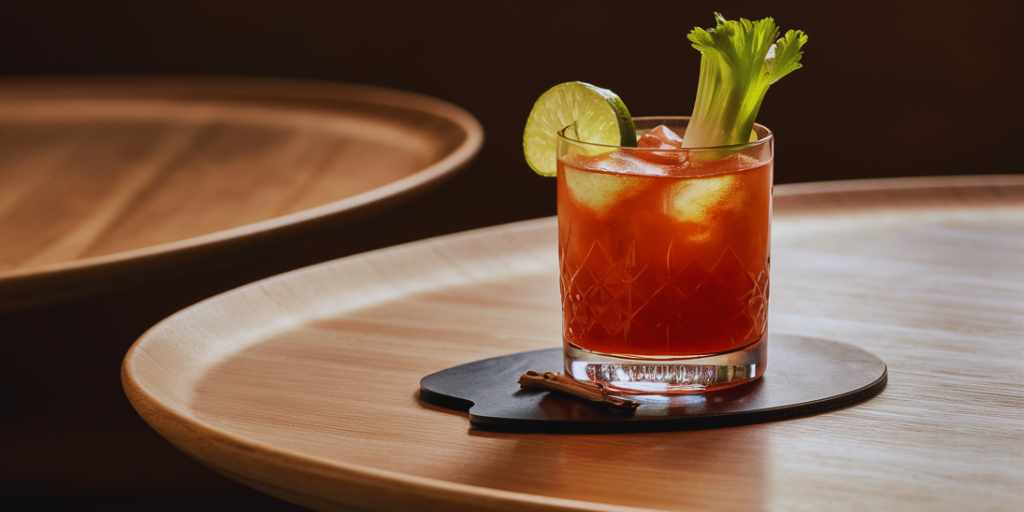At its core, effervescent mixology is about understanding how different levels and types of carbonation interact with various spirits, mixers, and garnishes. It requires a delicate balance, ensuring the effervescence enhances rather than overwhelms the drink’s flavour profile.
Crafting an effervescent cocktail might involve choosing the right type of sparkling water or champagne or crafting a house-made soda, each contributing a unique effervescence. It’s a craft that has become an essential skill at any well-rounded home bar, presenting a way to create signature effervescent experiences that leave a lasting impression.
Key Takeaways
- Effervescent mixology elevates the sensory experience of cocktails.
- Balancing flavours and carbonation is crucial in creating effervescent drinks.
- Mastery of effervescence is a valued skill in modern cocktail crafting.
Essentials of Effervescent Mixology
To elevate sparkling cocktails to a level of craft that delights the taste buds, understanding the fundamentals of effervescence in mixology is key—from the nuanced selection of ingredients to the finesse of combining and serving.
Understanding Effervescence in Mixology
Effervescence is the heart of sparkling cocktails, imparting a lively texture that can turn a drink from flat to refreshing. It’s all about the interaction between the drink and the taste buds, where carbonation adds a tactile sensation of fizz that enhances flavour perception.
Key Ingredients for Sparkling Cocktails
The cornerstone recipe of effervescent drinks includes sparkling wine like Champagne, Prosecco, or Cava, or spirits mixed with soda water or club soda. Citrus juices like fresh lemon and lime juice provide acidity, while elderflower liqueur or angostura bitters offer complex flavours.
Equipment and Techniques
To properly combine these elements into a delicious drink, one needs a shaker, glassware suitable for the type of drink, like a flute for mimosas, and a technique for stirring when necessary. Twisting a citrus peel over a drink can express essential oils for an aromatic garnish.
Recipes and Variations
Effervescent mixology can range from classic Mimosas and Mojitos to innovative concoctions. For example, a Sangria can be made sparkling by adding prosecco instead of still wine, and a twist of elderflower liqueur in a Champagne cocktail can offer a refreshing, modern take on a classic recipe.
Serving and Presentation
The presentation impacts how the drink is perceived and enjoyed. The choice of glass, whether a wine glass or something more unique, the garnish, and even the ice—all play roles in how the beverage is ultimately received and savoured with each sip.
Creating Signature Effervescent Experiences
Creating signature effervescent experiences in mixology involves meticulously crafting cocktails that feature bright and lively elements. The balance of flavours, the use of unique ingredients, and the occasion for which they are created all contribute to the memorable effervescence that defines these drinks.
Flavor Profiles and Combinations
To curate an effervescent delight, one must understand how flavour profiles interplay. The sweetness from sugar, the acidity of fresh lemon juice, and the zest of lime or grapefruit can combine to create a light and fruity base. Elderflower liqueur offers a floral touch that, when combined with bitters, brings a complex and refreshing layer to the cocktail.
- Sweet: Elderflower liqueur, sugar
- Sour: Fresh lemon juice, lime
- Bitter: Bitters
- Fruity: Grapefruit, lime
An artful combination stimulates the palate with dynamic and tasty notes, making each drink stand out as a delicious offering.
Innovative Use of Ingredients
Leveraging innovative ingredients can turn a simple, fizzy creation into a cool spectacle. Including fresh mint for a burst of herby freshness or the infusion of elderflower with rum for an unexpectedly harmonious flavour shows creativity. One can introduce a splash of soda to propel the effervescence.
Ingredients for Effervescence:
- Freshness: Fresh mint, elderflower
- Spirit: Rum
- Fizz: Soda water, effervescent tablets
Utilizing ingredients in novel ways can elevate a mixed drink from mundane to a bubbling, bright, and light refreshment.
Themed Effervescent Gatherings
Effervescent cocktails are often the highlight at themed gatherings, such as a brunch or a toast celebrating a special occasion. Drinks served at these events should encapsulate the spirit of fun and festivity. For instance, at a brunch, one may serve a light and fruity concoction topped with a fizzy finish, such as a mimosa cocktail variant.
Brunch Effervescent Selection:
- Brunch Classic: Mimosa with a twist of grapefruit
- Celebratory Toast: Rum-based cocktail with elderflower and bitters
- Light and Fun: Soda water spritz with lemon and a hint of mint
Mixing the right elements can transform these gatherings into memorable events centred around effervescent merriment.

Frequently Asked Questions
This section answers common queries about effervescence in mixology, from understanding the basics to mastering fizzy cocktail techniques.
What is effervescence in a drink?
Effervescence in a drink refers to the presence of bubbles and the sensation of fizziness, often resulting from dissolved carbon dioxide gas. This feature is a key characteristic in many cocktails, adding a sparkling texture to the beverage.
What is the difference between effervescent and carbonated?
The term “effervescent” generally describes the sensory experience of bubbles in liquid, whereas “carbonated” specifically refers to the infusion of carbon dioxide under pressure. All carbonated drinks are effervescent, but not all effervescent drinks rely solely on carbonation for their bubbles.
How can I make cocktails more effervescent?
To make cocktails more effervescent, one could incorporate carbonated mixers such as club soda, seltzer, or tonic or employ techniques like charging with a carbonation device. Adding acidic ingredients also helps release carbon dioxide when combined with a base such as baking soda for a natural effervescence.
What are the best ingredients to use for fizzy cocktails?
The best ingredients for fizzy cocktails include carbonated mixers like champagne, club soda, and tonic water. Additionally, citric acid from fresh lemon or lime juice can enhance the effervescence of the drink.
Are there specific techniques to enhance effervescence in cocktails?
Yes, certain techniques, such as chilling ingredients before mixing, pouring carbonated beverages gently along the side of the glass, and using fresh carbonated mixers, can enhance the effervescence in cocktails. Molecular mixology methods, like creating foams, can also add fizziness.
What are some classic effervescent cocktail recipes?
Classic effervescent cocktail recipes include the French 75, made with gin and champagne, and the Gin Fizz, which is brightened with a splash of soda water. These cocktails are cherished for their balance of flavour and lively bubbles.
How does the type of glassware affect the effervescence of a cocktail?
The type of glassware can significantly impact a cocktail’s effervescence; for instance, taller, narrower glasses preserve bubbles better than wider ones. Flutes and tulip glasses are preferred for serving bubbly drinks such as champagne or sparkling cocktails to enhance and maintain effervescence.
Can non-alcoholic drinks be made effervescent in mixology?
Yes, non-alcoholic drinks can also be made effervescent. One can create non-alcoholic beverages that fizz and pop by using carbonated waters, effervescent tablets, or a combination of acidic ingredients with a carbonating agent.






